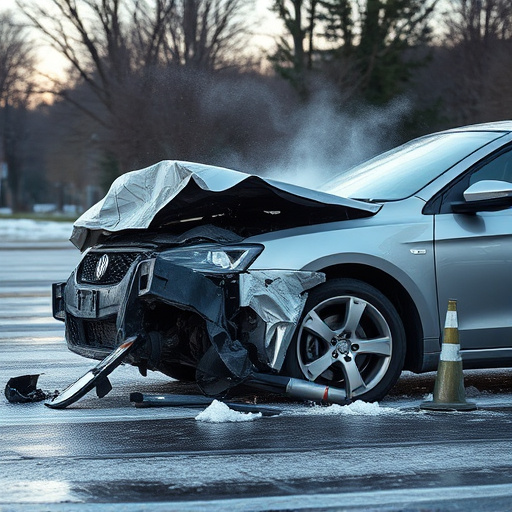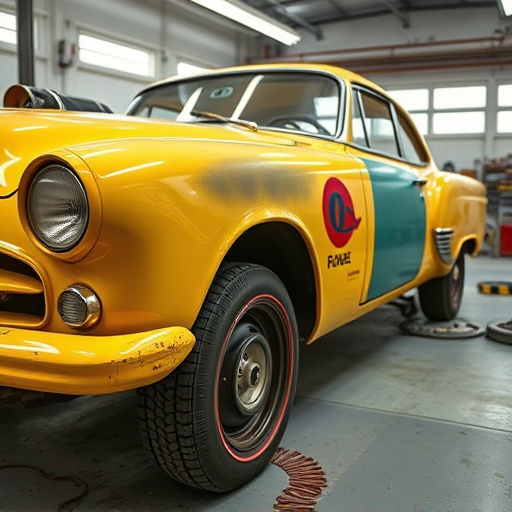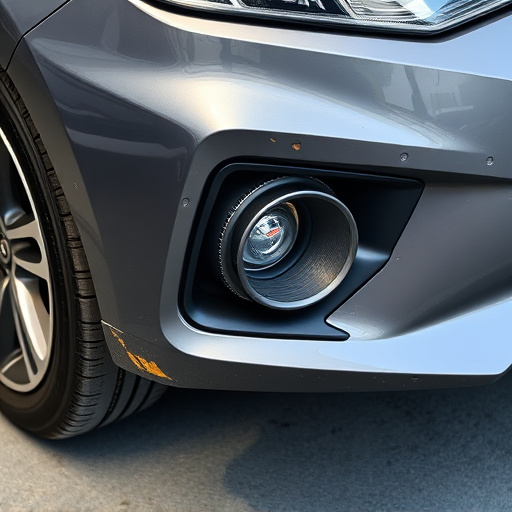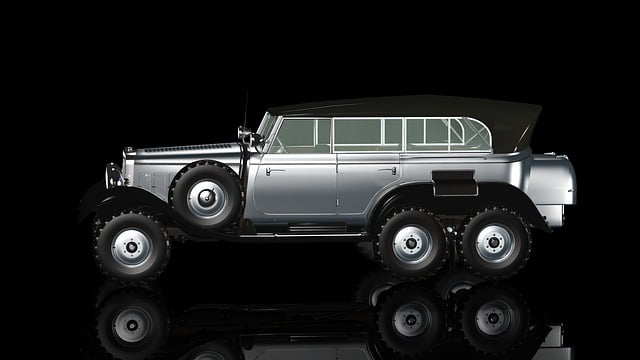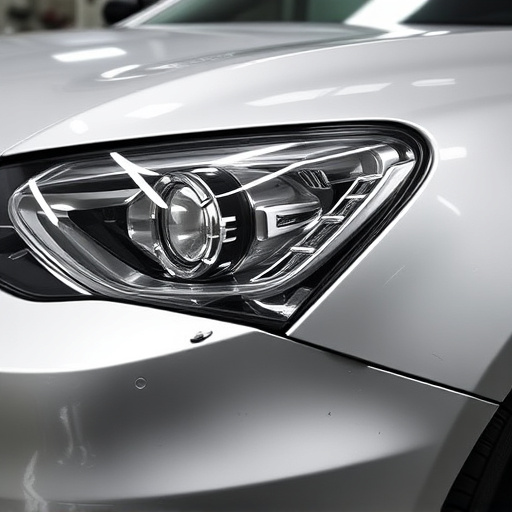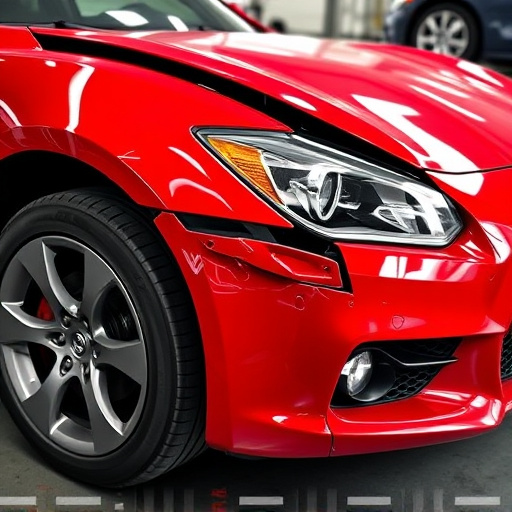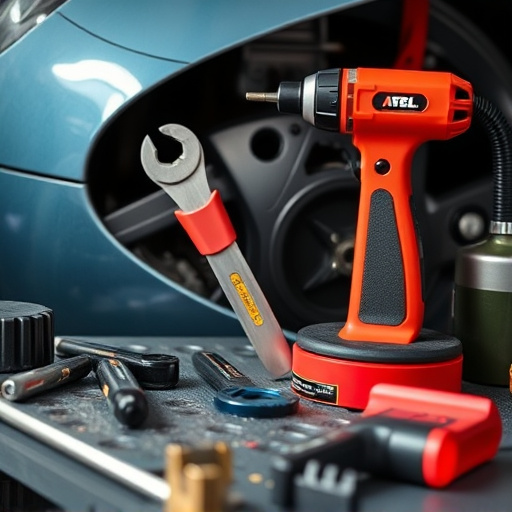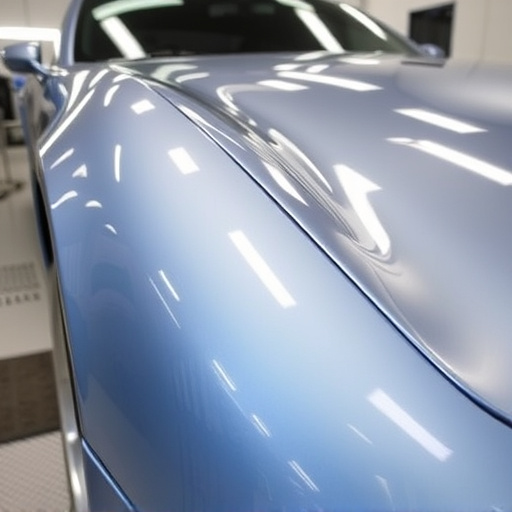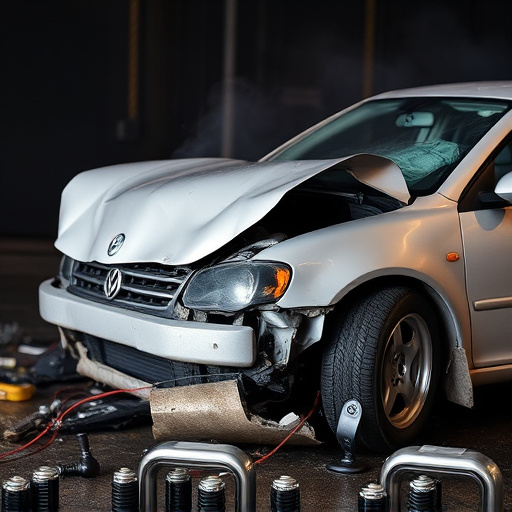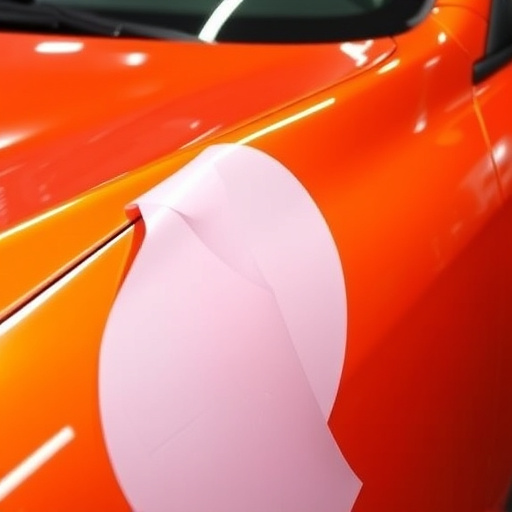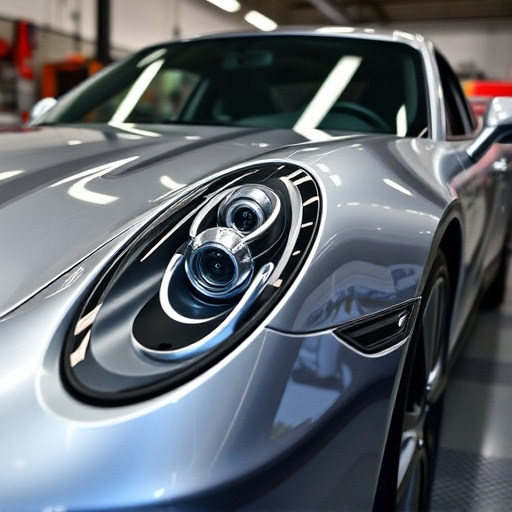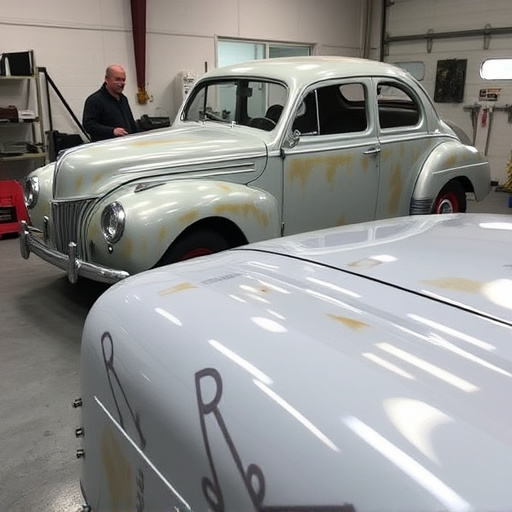Understanding weld-through primer application's dry time requirements is key for effective surface preparation in automotive repairs. Dry times vary based on ambient temp (70-85°F/21-29°C), humidity (40-60%), and product specifics, with 15-30 minutes to touch dry but full curing up to 24 hours needed. Optimal conditions ensure robust, long-lasting applications, while extreme or low humidity, heat, or cold can slow the process. Following manufacturer guidelines for wait times and cure times enhances results in paintless dent repair and intricate autobody work.
“Uncovering the optimal wait time after applying a weld-through primer is vital for achieving robust, long-lasting bonds. This article delves into the science behind weld-through primer application, exploring critical dry time requirements and environmental factors that influence curing. Learn how to optimize wait times, ensuring peak performance and minimizing issues in various industrial applications. By understanding these key aspects, you’ll enhance your welding processes and achieve superior results.”
- Understanding Dry Time Requirements
- Environmental Factors Affecting Curing
- Optimizing Wait Times for Best Results
Understanding Dry Time Requirements
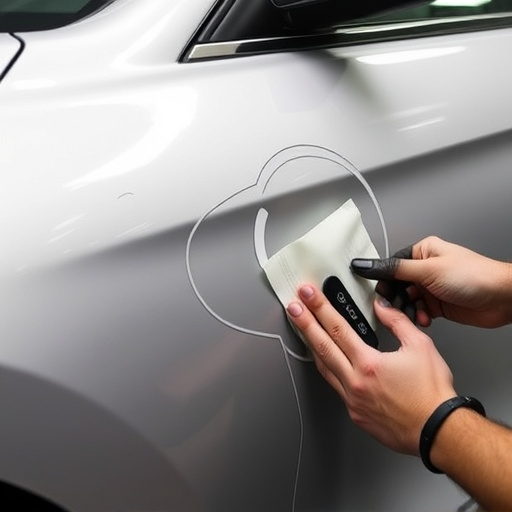
After applying weld-through primer to a surface, understanding the dry time requirements is crucial for effective preparation before painting or further autobody repairs. The drying process varies depending on several factors, including ambient temperature, humidity, and the specific product used. Most weld-through primers have recommended dry times printed on their labels, which serve as valuable guidelines.
For instance, in optimal conditions with low humidity and moderate temperatures, a typical weld-through primer may take around 15 to 30 minutes to dry to the touch. However, for complete curing, allowing several hours—up to 24—is often necessary. During this period, the surface should be left undisturbed to prevent any smudging or disruption that could compromise the integrity of the autobody work, especially in cases of paintless dent repair or intricate automotive body work.
Environmental Factors Affecting Curing
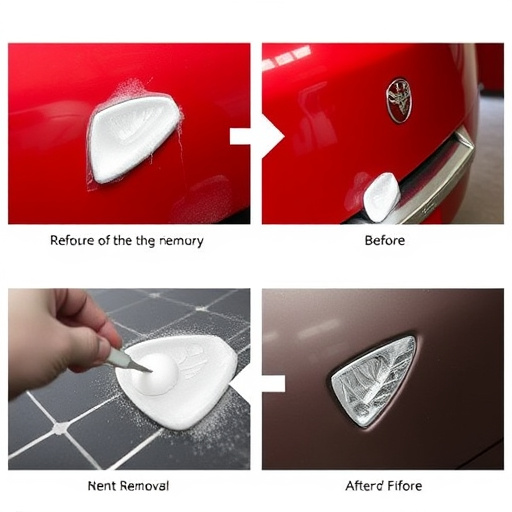
Environmental factors play a significant role in the curing process after weld-through primer application. Temperature and humidity are two key elements that can impact how quickly and effectively the primer sets. Optimal conditions for curing typically involve temperatures between 70-85°F (21-29°C) with moderate humidity levels, around 40-60%. Extreme heat or cold, along with high humidity, can slow down the curing process, leading to longer drying times and potential loss of primer integrity. On the other hand, low humidity environments may cause the primer to dry too quickly, resulting in surface cracks or uneven finishes.
In an auto collision center or during automotive restoration projects, understanding these environmental factors is crucial. Proper ventilation and controlled atmospheres can help maintain ideal curing conditions, ensuring a robust and long-lasting weld-through primer application. This attention to detail is especially important when dealing with intricate dent removal techniques, as it guarantees that the repair process meets high-quality standards, enhancing the overall aesthetics and structural integrity of the vehicle.
Optimizing Wait Times for Best Results
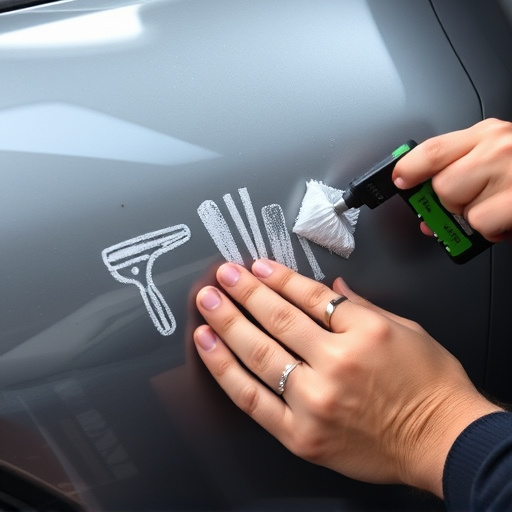
Optimizing wait times is key to achieving the best results from a weld-through primer application, especially in a vehicle body shop or car paint repair settings. The ideal drying time varies based on several factors, including ambient temperature, humidity, and the specific product used. Typically, a waiting period of 15-30 minutes is recommended before applying the top coat, allowing the weld-through primer to reach a dry, touchable state without being completely cured. This range ensures that the surface is ready for further processing, preventing issues like poor adhesion or blisters in vehicle collision repair scenarios.
For professional results in car paint repair, it’s crucial to follow the manufacturer’s guidelines and product specifications. Some weld-through primers may require a longer cure time, while others might dry faster. Understanding these nuances ensures that your work is not only efficient but also durable, contributing to the overall quality of repairs in any vehicle body shop.
When it comes to weld-through primer application, optimizing wait times is key to achieving robust, long-lasting bonds. By considering both dry time requirements and environmental factors, you can ensure ideal curing conditions for superior results. Understanding these elements allows professionals to make informed decisions, leading to efficient workflows and high-quality welds in various industries.
